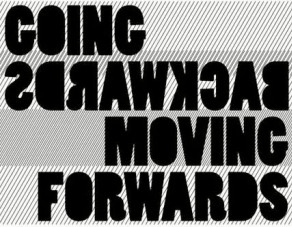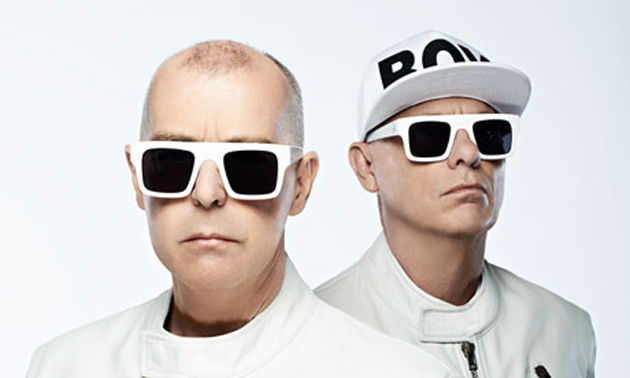
A certain sadness falls over you when you realize one of your favorite musical acts no longer makes cutting-edge material. It’s not so much that they lost their spark; rather, it’s that they’ve settled into the mid-range complacency of releasing a new album every few years and counting on the core group of fans, regardless of the music’s quality, to drive it up the charts.
You might as well say the synthpop greats of the 1980s and ‘90s have caught this malaise. Although Depeche Mode’s 2005 release Playing the Angel delved into a dark dance floor dirge, their two subsequent releases backed off, with David Gahan and Co. slowing down their pace. It’s as if they rescinded any element of creativity that kept them ahead of other synth-based contemporaries. While the three-piece haven’t fallen into the trite depths of modern-day Duran Duran, they skim pretty close to the bottom.
Pet Shop Boys – the U.K. duo that blended ‘80s New York club culture with soaring synth lines and pushed the envelope throughout the ‘90s with Spanish influences, live orchestral textures, and politically-reflective lyrics – appeared to be headed down the same path with 2012’s Elysium — which is about as soporific and sterilized as it sounds. The two who wrote such upbeat dance-meets-pop classics of the ‘80s as “Opportunities,” “Heart,” and “Domino Dancing” decided lower-BPM ballads suited them just fine.
Perhaps in the mid ‘00s, when dance music appeared to be taking a break, this might have been acceptable, and the Pet Shop Boys sort of did this with the guitar-based Release. When you’re at a time period in which electronic dance music, for good or bad, rages and whizzes around you, from commercials to instrumentation in inane Selena Gomez records, opting for the slow path, really, just looks like a big “I’ve given up.”
 Fortunately, singer Neil Tennant and keyboardist Chris Lowe saw the futility of ignoring modern dance music and, less than 12 months after Elysium dropped, put out Electric: An dance record that not only puts every chart-topping EDM artist to shame, it also makes Daft Punk’s Random Access Memories — the supposed savior record of EDM – look like a tepid, dated disco odyssey.
Fortunately, singer Neil Tennant and keyboardist Chris Lowe saw the futility of ignoring modern dance music and, less than 12 months after Elysium dropped, put out Electric: An dance record that not only puts every chart-topping EDM artist to shame, it also makes Daft Punk’s Random Access Memories — the supposed savior record of EDM – look like a tepid, dated disco odyssey.
From the start, Electric transports the listener into timeless club culture: not the thumpa-thumpa-synths-crescendo-drop structure of so many Beatport-topping tunes but of a time in which the beats flowed without anything but the basic 4/4 structure, with synth lines weaving in and out, and a vocoder providing startling punctuation.
The pop song structure synthpop artists from Alphaville to New Order gets cast aside for what resembles freeform electronic music. Save for “Love is a Bourgeois Construct,” verses and choruses can’t be discerned, while Lowe’s keyboard melodies emerge through the density. Tennant’s voice only fully forms by the second track, so Electric gives Lowe, along with producer Stuart Price, an opportunity to take front and center.
And, truly, Electric becomes a tour, of sorts, of how synthesizers and electronic music have evolved over the years. “Bolshy” takes the listener back to a time when Paris Hilton wasn’t the highlight of Ibiza, while the ominous distortion of “Fluorescent” transposes Suicide onto the dance floor with discordant fuzz and hiss harsh enough to make the staunchest brostepper wince. Album closer “Vocal” hints at the Boys’ own “It’s Alright” – the upbeat finale of 1987’s Introspective — as “Shouting in the Evening” has all the trappings to fit into a modern-day EDM setlist without a remix treatment.
But, particularly in the U.S., Electric may likely go under the radar – like every other album the Pet Shop Boys have done since 1993’s Very. Compared to the “We’re saving EDM” campaign behind Random Access Memories, Electric and the Pet Shop Boys truly have the retro-meets-modern combination that nods to early dance without ignoring what a powerful force it is in the present.
So, to count off, why is Electric the album that could save this genre?
1. No “We’re moving backwards to go forwards” nonsense
Inspiration and evolving technology have propelled electronic dance music forward for more than five decades. That’s the big problem with Daft Punk’s “Get Lucky” – as catchy and radio-friendly as it is, it still sounds like half-baked, tired disco.
 Price, who previously produced New Order’s full-length last album, admits that, while he and the Boys looked a bit toward the past (this emerges particularly with the Second Summer of Love footage in the album’s promo trailers), they understand Electric is a modern-day dance music record. Price said to the Telegraph: “Making ‘Electric’ was an exciting experience. We recorded it between Berlin, London and Los Angeles using various techniques between old school synth and drum machine programming and new school computer mangling.
Price, who previously produced New Order’s full-length last album, admits that, while he and the Boys looked a bit toward the past (this emerges particularly with the Second Summer of Love footage in the album’s promo trailers), they understand Electric is a modern-day dance music record. Price said to the Telegraph: “Making ‘Electric’ was an exciting experience. We recorded it between Berlin, London and Los Angeles using various techniques between old school synth and drum machine programming and new school computer mangling.
In an interview with GQ, Lowe reinforces this notion. While mentioning that this album borrows a bit from their debut Please and takes into account an ‘80s New York club vibe, Electric isn’t a retro release: “I suppose it draws upon some of the sounds and energy of the first album. But Electric could only have been made now. The sounds, the recording techniques are so contemporary, and that comes from working with Stuart Price.”
In terms of technology, Lowe explains, they and Price began with older analog synths but then used the latest software.
2. They Embrace the DIY Formula of Releasing Electronic Music
What echoed throughout many 2013 Winter Music Conference panels was this sentiment: You can’t depend on the major labels anymore. Yet, older electronic groups like Depeche Mode and Daft Punk flocked to Columbia over the past year.
 Just as producers throughout the past 30 years have realized the big labels stifle creativity, the Pet Shop Boys finished off their contract with EMI last year and started up their own, X2. Electric is their first full-length release on their label.
Just as producers throughout the past 30 years have realized the big labels stifle creativity, the Pet Shop Boys finished off their contract with EMI last year and started up their own, X2. Electric is their first full-length release on their label.
This factor, according to Lowe in his GQ interview, not only allowed for greater experimentation but further influenced them to consider breaking away from the formulaic pop song structure. In speaking about their creative freedom on X2, Lowe explained, “But we have even more now. We’re not signed to a big label, where they effectively own you. For example, ‘Vocal’ is too long to be chart eligible, so we’re not playing by any of the rules. Even the music on Electric doesn’t really fit in with the rules of what a pop song is supposed to be.”
Yet, in spite of now venturing off on their own, Lowe admitted that digital distribution, frankly, is difficult.
3. They Top The Charts Without Selling Out
The big elephant in the room, when it comes to discussions about modern EDM artists, is: Why do most of the biggest-selling albums feature pop stars and rappers? It’s safe to say David Guetta wouldn’t be the producer he is if he hadn’t worked with the Black Eyed Peas, nor would Calvin Harris created a hit with 18 Months if he didn’t go into the studio Rihanna first. Excluding releases from Skrillex and Deadmau5 that slightly scooted into the Billboard 200 ranks in 2012, pop star collaborations make for effective branding – but push the actual instrumentation and production into secondary status.
Yet, at least in the U.K., sales for Electric surpassed even those for Jay-Z’s Magna Carta Holy Grail. In fact, sitting at No. 2 on the Official Album Chart as of July 17, the Boys are poised to overtake Robin Thicke’s ubiquitous Blurred Lines.

4. They Acknowledge Dance Music’s Varied History
Few things are more painful than hearing a young aspiring producer say his inspiration is Swedish House Mafia. When producers don’t realize dance music existed decades before Tiesto peddled his brand of easy-listening trance, you know the genre is in trouble.
Is the solution to this short-sightedness, then, to only acknowledge that “true” dance music emerged and disappeared in the ‘70s and to ignore all the sonic and technological innovations of the ‘80s and ‘90s? Lowe, in his GQ interview, admits he finds Random Access Memories too retro-sounding solely for this reason.
At the same time, the duo in a Guardian interview was asked to name their top 10 dance tracks, with Tennant mentioning in the introduction that all music has been considered dance music at one point.
Along with this notion, the two selected long-forgotten (or even unknown) dance music tracks, including cuts from the Temptations, Disco-Tex and his Sex-O-Lettes, and Sak Noel. Through the course of their interview, their selection nods to most of dance music’s evolution – from ‘70s gay clubs through nights at New York’s Funhouse Disco in the ‘80s to even modern, excessively-remixed EDM tracks.




